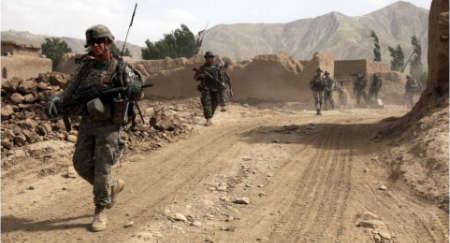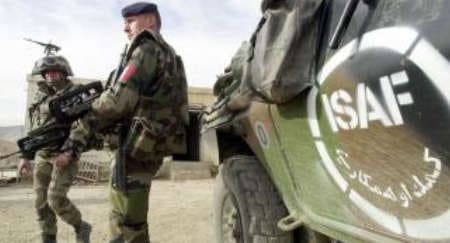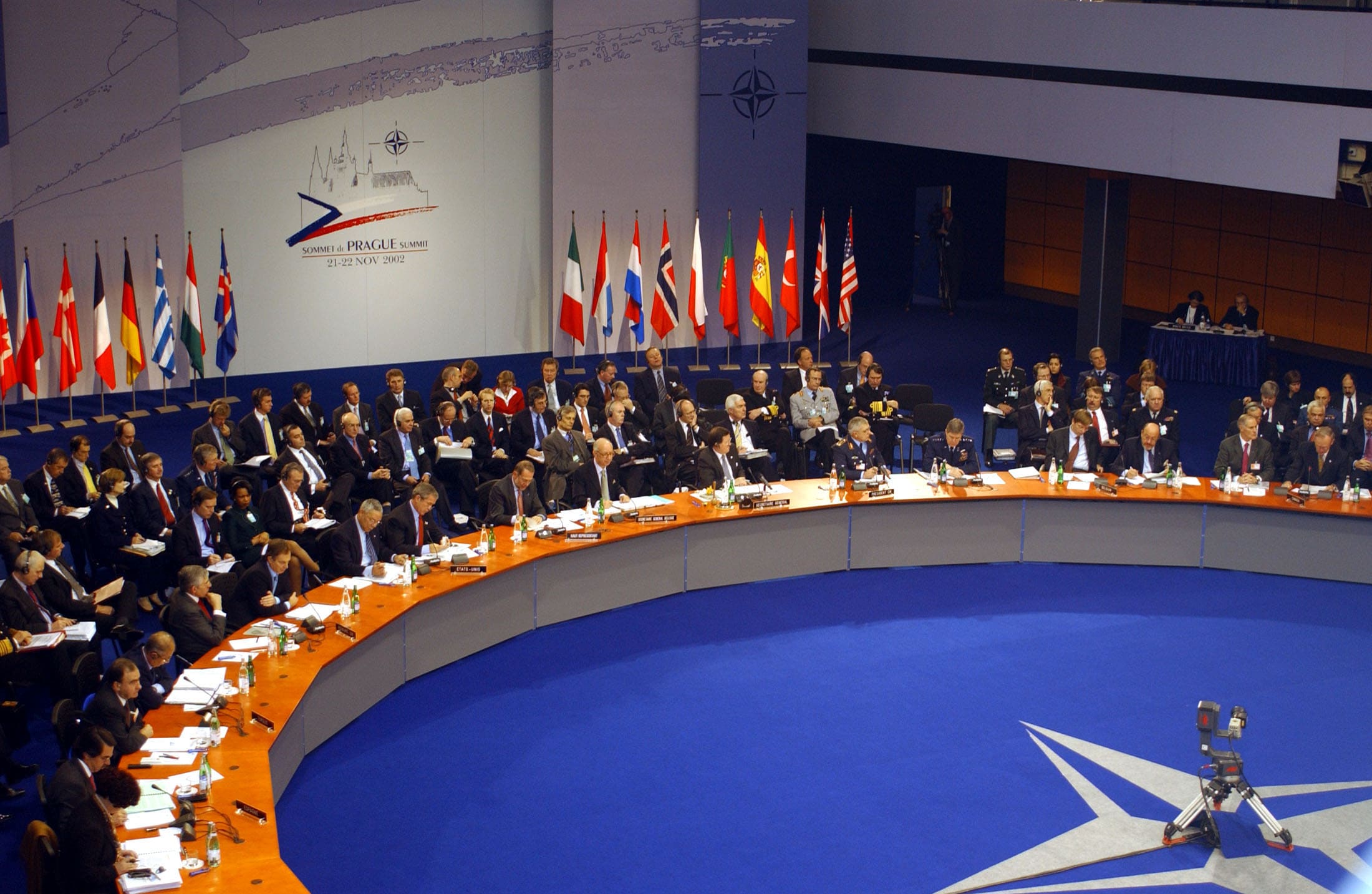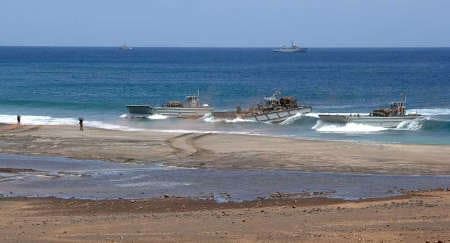In retrospect, instead of heralding NATO's decline, "09/11" became the catalyst for the most fundamental changes in NATO's history, argues Michael Ruhle. Yet for the NATO Allies, the questions they had to ponder from the outset were as obvious as they were profound.
Should the Allies invoke Article 5 of the Washington Treaty, NATO’s collective defence commitment, thereby giving the strongest political signal of solidarity sovereign nations can give? Or would this just drag the Alliance into what might become a very “personal” campaign of the United States to seek revenge against whoever had committed this heinous crime? Above all, what if Washington simply decided that this was essentially a national issue, thus sidelining NATO and its offers of solidarity?
The US did not make NATO the centrepiece of its response...Washington concluded that a very different coalition was required
The immediate weeks that followed “9/11” appeared to confirm the views of those who had been reluctant about making grand gestures.
Although the Allies invoked Article 5 only one day after the attacks, and certain Alliance mechanisms, such as granting the US blanket overflight rights, were immediately put into effect, the US did not make NATO the centrepiece of its response. As it became clear that the origins of the attacks lay in Afghanistan, Washington concluded that a very different coalition was required.
For a short while at least, the “NATO-in-decline” school of thought appeared to have a field day: After having invoked Article 5 for the first time in NATO’s history, the response from Washington to the Allies seemed to amount to “don’t-call-us, we’ll-call-you.”
NATO’s Transformation
A few months and many NATO obituaries later, things became clearer. The US had not been as dismissive as it had seemed initially. Nor was NATO doomed to being marginalised in the fight against international terrorism.
Secretary General Lord Robertson’s warning that the critics of NATO were making the mistake of succumbing to the “parochialism of the moment” proved to be right on the mark. The transatlantic community needed time to fully absorb all of the implications of “9/11”. Eventually, however, the lessons of that fateful day would be reflected in NATO’s political and military agenda.
Indeed, NATO had started to adapt its agenda even before the Allies consciously set out to do so. The first example was the invocation of Article 5 on 12 September 2001. By agreeing that an attack by a non-state actor could be categorized as an “armed attack” in line with the Washington Treaty, the Allies broadened the understanding of collective self-defence far beyond its traditional meaning of responding to a military invasion.
Moreover, as this first-ever invocation of Article 5 had no anti-Russian context, it effectively demolished long-held myths that collective defence was all about Russia.
Another major change was the deployment of forces from many NATO nations to Afghanistan, complemented by statements in key documents to meet challenges “whenever and wherever” they occurred. This marked the de facto end of NATO’s out-of-area debate, which, as the French NATO Ambassador put it cogently, had collapsed with the Twin Towers.
Put simply, without agonising debate NATO moved from a geographical to a functional understanding of security. This shift proved to be more significant in ensuring NATO’s future relevance than any other change it has undergone in its history.
The conceptual dimensions soon followed, however, notably with NATO’s Military Concept for the defence against terrorism. With the attacks still fresh in everyone’s mind, the Concept was able to break new ground with respect to the early use of force. A little over a year after “9/11”, NATO’s Prague Summit agreed on the development of new military capabilities that would support its counter-terrorist missions, notably the NATO Response Force and various initiatives on nuclear, biological, and chemical (NBC) weapon defence. A Partnership Action Plan for the Defence against terrorism was agreed as well. And several partner countries participated in “Operation Active Endeavour”, NATO’s Article 5 counter-terrorist naval operation in the Mediterranean.
The Lessons of Afghanistan
Taking command of the International Security Assistance Force (ISAF) in Afghanistan in August 2003 was another major step towards a NATO role outside Europe.
Predictably, the Afghanistan mission confronted NATO with numerous challenges, ranging from the lack of appropriate military capabilities of many Allies to the perennial debate about what constituted a “fair” sharing of risks and burdens. The mission also exposed serious political and military asymmetries within the Alliance, as well as differences among Allies regarding the importance of this mission and of the means necessary to succeed. Still, the Afghanistan engagement forced NATO to effect even more changes – changes that would put NATO in a much better position to meeting future challenges.
Today’s NATO is far more experienced in conducting complex operations far from home than it was before “9/11”
One major change concerned the military capabilities of Allies and partners. While many nations suffered considerable losses in Afghanistan, the ISAF mission accelerated the transformation of many nations’ Cold War legacy forces towards expeditionary missions. For many nations in ISAF, this mission amounted to their first combat experience in decades. Confronted with demanding tasks ranging from stabilization to counter-insurgency, the forces of many Allies and partner countries had to adjust their training and equipment.
As a result, today’s NATO is far more experienced in conducting complex operations far from home than it was before “9/11” and the subsequent Afghanistan mission. Moreover, the experience that NATO gained in training indigenous security forces may also provide a valuable asset in other contingencies – for example, in post-Qadhafi Libya.

The Alliance became the hub of an unprecedented international coalition...and NATO’s partnerships became global in reach
Another major change concerns partnerships. As the overall objectives of NATO’s Afghanistan mission were widely shared by many countries from across the globe, the Alliance became the hub of an unprecedented international coalition, with members ranging from the Asia-Pacific region to Latin America. As a result, NATO’s partnerships not only became global in reach, but, like NATO itself, transformed from a regional towards a more functional approach. These changes have made NATO’s partnerships a much more effective instrument for tackling future challenges, be they terrorism, proliferation, cyber attacks, or humanitarian disasters.
The third major area of change concerned NATO’s relations with other institutions.
From the outset, NATO’s role in Afghanistan was to provide for the secure environment that would allow civilian actors to play their part in re-building that war-torn country. While the engagement of the civilian side was often seen as lagging behind the military effort, the relationship between ISAF and the civilian organisations, both governmental and non-governmental, developed over time. For example, the relationship between NATO and the United Nations, which during the Balkan conflicts in the 1990s had been difficult, improved markedly.
A true Comprehensive Approach, combining political, economic, and military tools, is still a distant objective, yet NATO today is far better connected to the civilian part of the international community than it was before “9/11” and Afghanistan.
A true Comprehensive Approach, combining political, economic, and military tools, is still a distant objective, yet NATO today is far better connected to the civilian part of the international community than it was before “9/11” and Afghanistan
The transformation of NATO that was sparked by “9/11” is far from complete, however.
Al Qaeda has been significantly weakened, but achieving by end 2014 a full transition to Afghan security leadership over all provinces and districts remains a sizeable challenge. Moreover, although NATO is now acting on several continents, the need for Allies to foster a “global” collective mindset is not yet fully developed. As a result, NATO often only becomes interested in a region once a crisis has erupted and the deployment of forces has to be contemplated.
Another area that still needs more attention is partnership. In particular China and India, both countries with a serious stake in Afghanistan’s future, must be brought closer.
Finally, more conceptual work is needed with respect to NATO’s role in combating terrorism, for example by complementing the Military Concept with a political one.
Conclusion
At the beginning of the 21st century, NATO was confronted with a double dilemma. First, even before “9/11” it was becoming clear that new threats, such as terrorism and the proliferation of weapons of mass destruction, were emerging from outside of Europe, drawing the United States’ attention toward Central Asia and the Middle East. However, as long as NATO still considered itself to be solely about managing European security, any US focus away from Europe would have meant a focus away from NATO.
The second dilemma resulted from the fact that the military capabilities of most Allies were still optimized for a contingency that was becoming ever less likely: a large-scale war in Europe. Hence, there were worries that US unilateralist impulses would be reinforced and Europe’s influence on Washington weakened.
Instead of heralding NATO’s decline, “9/11” became the catalyst for the most fundamental changes in NATO’s history
In part by design, but in larger part by simply following its sound political instincts, the transatlantic community was able to overcome those dilemmas. Instead of heralding NATO’s decline, “9/11” became the catalyst for the most fundamental changes in NATO’s history, turning the Alliance from an Alliance “in being” to an Alliance “in action”. It also reinforced NATO’s role as a unique institution that combines military competence with political appeal. The transatlantic community had demonstrated that it is, as one European observer aptly put it, a “learning community”.
Although “9/11” had thrown everyone off-balance, it is clear in retrospect that NATO did in fact heed the advice given by Henry Kissinger shortly after the attacks: it had turned tragedy into opportunity.



